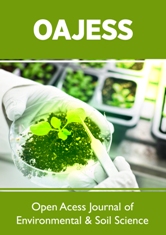
Lupine Publishers Group
Lupine Publishers
Menu
ISSN: 2641-6794
Opinion2641-6794 
Claiming Environmental Pollution Compensation: The Case of Oil-Leakage in Indonesia Volume 5 - Issue 2
Effnu Subiyanto*
- Widya Mandala Surabaya Catholic University, Indonesia
Received: June 10, 2020; Published: June 25, 2020
Corresponding author: Effnu Subiyanto, Widya Mandala Surabaya Catholic University, Indonesia
DOI: 10.32474/OAJESS.2020.05.000207
Abstract
Cases of oil-leakage are more frequent happened today in Indonesia, following by damaging other environmental issues. Pipe gas exploded, oil-leakage onshore or offshore, forest fires, and many more incidents. Recently since mid of 2019, a pipeline of oilleakage happened again in Indonesia and remain a big question on how to quantify compensation fairly and equally. This opinion to inspire how to measure such compensation based on comparison with other cases previously occurred.
Opinion
The case of Pertamina YYA-1 gas pipeline leakage made
pollution on the Offshore North West Java (ONWJ) block since July
2019 began to be compensated by the SOE. The initial phase of
compensation was disbursed Rp 18.54 billion (US$ 1.32 million)
from the Pertamina Hulu Energy (PHE) ONWJ for 2 villages namely
Desa Sadari for 1,245 residents and Desa Tambaksari for 780
residents. Each compensation is Rp 900,000 (US$ 64.29) for every
resident/month for the 2 months impacted from July to August
2019.
There are still many villages affected by the Ministry of Marine
Affairs and Fisheries of Indonesia (KKP) based on data on 28
August 2019, at least 14,721 residents affected in West Java and the
Jakarta. Specifically, in Banten, the affected areas are in 7 cities/
regencies namely Karawang, Bekasi, Kepulauan Seribu, Serang,
City of Serang, Tangerang, and the City of Cilegon. The other sociostructural
directly affected namely the salt farmers, fish farmers
and small fishermen also have not received compensation.
The Source of the Problem
In the case of the oil spill on the ONWJ YYA-1 block, the oil spill
reached 3,500 meters and almost ¾ circle around the platform and
continues to grow. This pollution originated from the Rig Soehanah
owned by the Limited Company (PT) Apexindo Pratama Duta
which leaked around the beginning of July 2019. Closure of the well
is predicted to take a maximum of 3 months but so far failed. The depth of 1,000 meters, the diameter of 30 inches, drilling angled
have done by the Boots & Coots. Leaks have so far affected 10
villages. the 8 villages spread across Karawang and 2 villages in
Bekasi and 7 beaches.
The main contractor of the Pertamina Hulu Energy (PHE) has
not been able to overcome the incidents. the YYA-1 production is 23
million cubic feet of gas per day (mmscfd) and 3,000 barrel per day
(bpd). The settlement with relief wells and cement injected to stop
leakage. If successful, stop leaking within 8 weeks to 10 weeks of
an emergency on July 15, 2019. Collaboration with experienced the
US Boots & Coots has also not yet produced results. The YYA has 3
wells. A leak occurred when re-entry of the YYA-1 well. A gas bubble
appeared on the YY platform from the Ensco-67 rig, the ONWJ area.
The YYA-1 well that was leaked was a YYA-4 exploration well in
2011. A layer of oil has appeared in the sea since July 16, 2019,
around the bridge.
Benchmarking
When compared with British Petroleum (BP) which became a
polluter of the Gulf of Mexico due to oil spills from the Deepwater
Horizon bridge in April 2010, the amount of the lawsuit filed
by the US government was US$ 20 billion (Rp 172 trillion). BP
lost money, the oil lost reached 4.9 million barrels, the total loss
reached US$ 61.6 billion (Rp 862.4 trillion). In Indonesia, the case
of compensation for environmental pollution is complicated and the solution cannot be found. The problem of Lapindo victims
until the fourteen years is also not finished, let alone expect the
completion of its natural damage, perhaps like hanging smoke. No
one knows how long the Lapindo’s case will be over. The National
Budget (APBN) has been drained for at least Rp 11.5 trillion (US$
821.43 million) and will continue to grow because the problem has
not been resolved.
According to Cooper (1997) to measure the appropriateness of
compensation to the environment, the magnitude of the impact on
the social and environment must be determined in the period after
the corporation operates. The onset of flooding even though it did
not occur before is a simple example, damage to physical facilities
such as infrastructure and disruption of population health can be
directly known and can be calculated immediately. Other excess
flooding impacts such as destroying agricultural areas so that
harvest failure must also be calculated. Another social report that
logically has relevance to this flood event is the CSR worth costs
of just one event. In this case, it seems that corporate social and
environmental obligations seem large even though they are not
because the value of psychological disorders such as fear, phobia,
community depression, heart attacks to children who cannot
go to school cannot be quantified. Damage to cultural values or
disappearing valuable historical artefacts is another thing that also
cannot be calculated.
This term of propriety and reasonableness is also very sectoral
because of social and environmental issues for corporations
operating in Java will certainly not be the same as the impact of
corporate operations outside Java.
In the case of clearing tropical forests into oil palm plantations
in Kalimantan, for example, they will also face different social and
environmental problems. In this region if the destruction of certain
animals can be quantified in a certain value, for example, the killing
of an Orang Utan, then the value of these animals is tangible and
intangible can be charged as CSR costs that should be returned by
the corporation. It also becomes a social and environmental burden
if the corporation removes certain vegetation populations and
habitats.
However, it seems that the terminology of propriety and
fairness will not be easily taken for granted by business actors
and this will be a source of new conflicts between communities
and corporations. The dragons if in the area there are a group of
business actors together, then they will defend each other as a
corporation rather than a business actor that has a negative social
and environmental impact. The corporate employers will be busy
evading and avoiding the risk of recovering social and environmental
impacts which are certainly expensive. Potential areas of conflict
due to intersection are for example bonded areas or areas with
many types of industries close together. The government, business
actors and the local community, in this case, must sit together to take a middle ground. This is the only best solution and risk that
can be taken because the Government Regulation (PP) Number
47/2012 provides a blank check that is not firm.
The Ecoton Surabaya had ever sent a lawsuit of Rp 3.852 billion
(US$ 275.14 thousand) to the State-owned Plantation (PTPN)
X, which is suspected to be the mastermind behind the recent
Surabaya River pollution. Pollution from the Gempol Kerep sugar
factory - a subsidiary of PTPN X - poisoned thousands of fish and
other aquatic habitats. The cleanliness of the Surabaya River is very
important for the citizens of Surabaya because 64 per cent is the
main source of raw material for the PDAM to supply clean water
for city residents. An interesting lesson from the Ecoton’s lawsuit
is that the quantification of losses due to environmental pollution
have been carried out by corporations. This is perhaps the first
lawsuit offense in Indonesia that has included environmental
economic calculations. The latest PP regarding the obligation of the
social and environmental responsibility (CSR) program Number
47/2012 which is mandatory from the Limited Liability Company
Law Number 40/2007 article 74 does not clearly state how many
figures are determined from a CSR program.
This figure is eagerly awaited by business actors to end the
polemic about the value or size of CSR to the surrounding community
that is appropriate and legal. But unfortunately, the value of
corporate liability doing business in the field of natural resource
processing (SDA) was not clearly and clearly stated. Its obligations
are still limited to the amount of propriety and reasonableness.
Social and environmental issues today are very serious and critical.
Various problems that did not exist now have come into being
after business entities have been declared allowed to operate in a
region. These impacts include symptoms of global warming due to
blind logging, floods, prolonged drought, susceptible to illness for
the surrounding population, lost livelihoods such as barren fields,
polluted waters and also the danger of air pollution to disturbance
of comfort for example in terms of engine noise noisy factory engine.
Surabaya River Pollution is the latest factual example in East Java.
However, for the government, it seems difficult to refer to what
is the proper value as a form of compensation for a corporation
to social and environmental? This problem is indeed a dilemma
because if the government applies a strict amount standard, then
the other side is threatened such as tax revenues, unemployment
and the economic system that has been built. But on the other hand,
this blank check is no less a potential conflict, because corporations
that claim to get minimal profits or losses are also entitled to not
carry out their CSR obligations.
Environmental Losses
Take for example the case of a leaky oil and gas pipeline in
Balikpapan which cost the country from the environment of US$ 8.27 billion but only claimed to only Rp 10.15 trillion (US$ 725
million). The details are for compensation for environmental
services of Rp 9.96 trillion (US$ 711.43 million), recovery/
restoration costs of Rp 184.05 billion (US$ 13.15 million), and
costs for resolving environmental disputes of Rp 868,628 million
(US$ 62.05 thousand). The Balikpapan case is because Pertamina
is contaminating the Balikpapan bay, West Balikpapan, East
Kalimantan (April 2018). Around 17,000 hectares of mangroves
have been affected and died, young mangroves are vulnerable to
death, many dolphins have died and moved upstream, and 162
fishing boats are not operating.
Indonesia is currently also in the process of verifying crude
oil pollution in the Montara bay. The lawsuit to the Central
Jakarta District Court was Rp 23.01 trillion (US$ 1.64 billion).
The Ministry of Environment and Forestry (KLHK) conducts
final research into the impact of the Montara Block oil spill. The
lawsuit is related to strict liability or the absolute responsibility
of the environmental destroyer. The strict liability suit in Law
Number 23/1997 concerning Environmental Management was
changed to Law Number 32/2009 on Protection and Management
of the Environment (PPLH). The government will sue PT PTTEP
Australasia (Ashmore Cartier) Pty Ltd. PTTEP Australasia is a
subsidiary of The Petroleum Authority of Thailand Exploration and
Production Public Company Ltd (PTTEP).
However, the hearing on 23 Augustus 2017 in Jakarta District
Court (PN Jakarta) held the first case of the Montara oil case in the
Timor Gap. The KLHK claims that PTTEP AA is based in Australia,
PTTEP Thailand and PTT PCL Thailand. PTTEP AA was absent.
Unsuccessful due to the absence of PTTEP. In the aftermath of the
non-cooperation of PTT EP from Thailand over pollution complaints,
it was coordinated by the Coordinating Ministry of Maritime Affairs
so that Pertamina and SKK Migas prohibited doing business with
PTT EP because of pollution of the Timor Sea 2009. PTT EP group
PTT Australasia was sued Rp. 27.4 trillion. The planned acquisition
of 3-4 oil and gas blocks in Java and Sumatra will be halted. EP PTT
business activities are diverted to Malaysia. The Malunda block in
the deep sea of West Sulawesi, the South Mandar block has been
returned, both of which were obtained by PTT EP in 2010
The EP PTT Block is currently in Natuna Sea with Pertamina
at 11.5 per cent each. The value of PTT EP global assets is US$ 19
billion, as much as 17.7 per cent worth US$ 3.36 billion in Southeast
Asia. The case occurred in 2009 of the explosions of the Montara
refinery damaging mangrove forests, seagrass beds, coral reefs,
and extensive marine ecosystems. Articles used by Indonesia are
Articles 87 and 88 of Law Number 32/2009 on Environmental
Management and Protection and require compensation of Rp 23.01
trillion (US$ 1.64 billion). The details are mangrove damage of Rp
4.55 trillion (US$ 325 million), seagrass damage of Rp 1.15 trillion
(US$ 82.14 million), damage to coral reefs of Rp 17.3 trillion (US$
1.24 billion) and recovery costs of Rp 4.46 trillion (US$ 318.57
million).

Top Editors
-

Mark E Smith
Bio chemistry
University of Texas Medical Branch, USA -

Lawrence A Presley
Department of Criminal Justice
Liberty University, USA -

Thomas W Miller
Department of Psychiatry
University of Kentucky, USA -

Gjumrakch Aliev
Department of Medicine
Gally International Biomedical Research & Consulting LLC, USA -

Christopher Bryant
Department of Urbanisation and Agricultural
Montreal university, USA -

Robert William Frare
Oral & Maxillofacial Pathology
New York University, USA -

Rudolph Modesto Navari
Gastroenterology and Hepatology
University of Alabama, UK -

Andrew Hague
Department of Medicine
Universities of Bradford, UK -

George Gregory Buttigieg
Maltese College of Obstetrics and Gynaecology, Europe -

Chen-Hsiung Yeh
Oncology
Circulogene Theranostics, England -
.png)
Emilio Bucio-Carrillo
Radiation Chemistry
National University of Mexico, USA -
.jpg)
Casey J Grenier
Analytical Chemistry
Wentworth Institute of Technology, USA -
Hany Atalah
Minimally Invasive Surgery
Mercer University school of Medicine, USA -

Abu-Hussein Muhamad
Pediatric Dentistry
University of Athens , Greece

The annual scholar awards from Lupine Publishers honor a selected number Read More...




